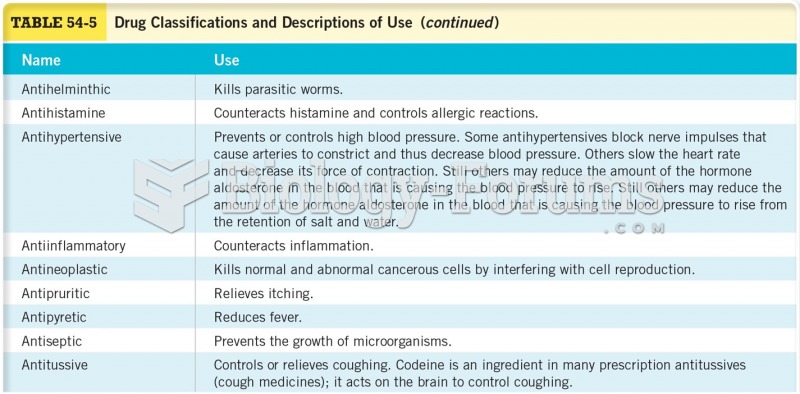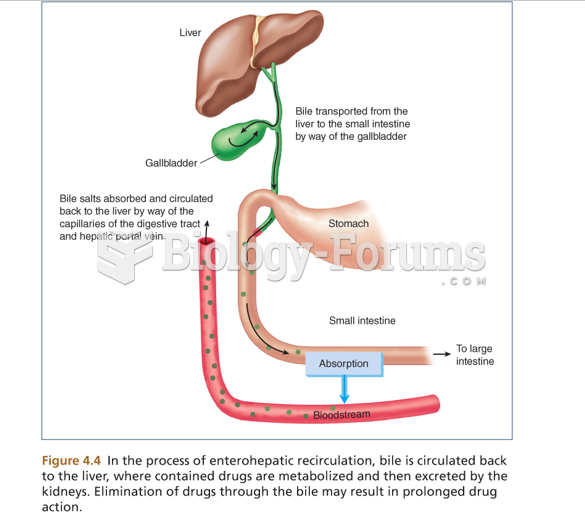Answer to Question 1
4
Rationale 1: Depression is not the concern with this combination.
Rationale 2: Seizures are not the concern with this combination.
Rationale 3: Control of allergies is not the concern with this combination.
Rationale 4: The combination of diphenhydramine (Benadryl) and a monoamine oxidase inhibitor (MAOI) drug can result in a hypertensive crisis.
Global Rationale: The combination of diphenhydramine (Benadryl) and a monoamine oxidase inhibitor (MAOI) drug can result in a hypertensive crisis. Depression, seizures, and control of allergies are not the concern with this combination.
Answer to Question 2
3
Rationale 1:Topical drugs intended to produce a local effect are absorbed very slowly and only small amounts reach the general circulation. Topical delivery also produces fewer side effects. Systemic absorption occurs with slow release and absorption into the general circulation to produce a systemic (system-wide) effect. Transdermal patches contain a specific amount of drug with a specific rate of delivery.
Rationale 2:Topical drugs intended to produce a local effect are absorbed very slowly and only small amounts reach the general circulation. Topical delivery also produces fewer side effects. Systemic absorption occurs with slow release and absorption into the general circulation to produce a systemic (system-wide) effect. Transdermal patches contain a specific amount of drug with a specific rate of delivery.
Rationale 3: Fewer side effects are a desired reaction of a topical drug.
Rationale 4:Topical drugs intended to produce a local effect are absorbed very slowly and only small amounts reach the general circulation. Topical delivery also produces fewer side effects. Systemic absorption occurs with slow release and absorption into the general circulation to produce a systemic (system-wide) effect. Transdermal patches contain a specific amount of drug with a specific rate of delivery.
Global Rationale: Fewer side effects are a desired reaction of a topical drug. Topical drugs intended to produce a local effect are absorbed very slowly and only small amounts reach the general circulation.







